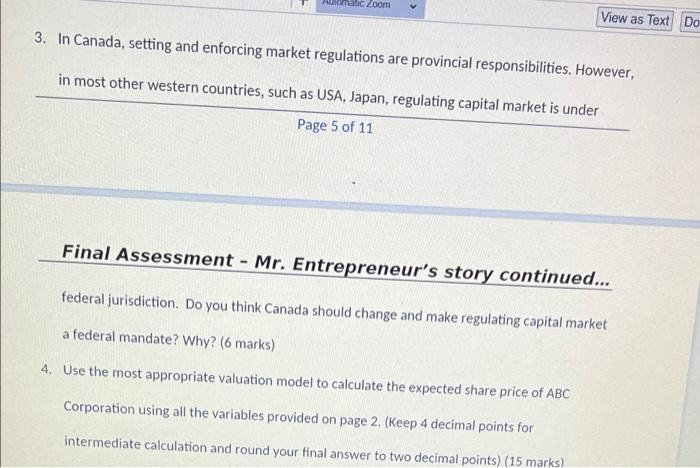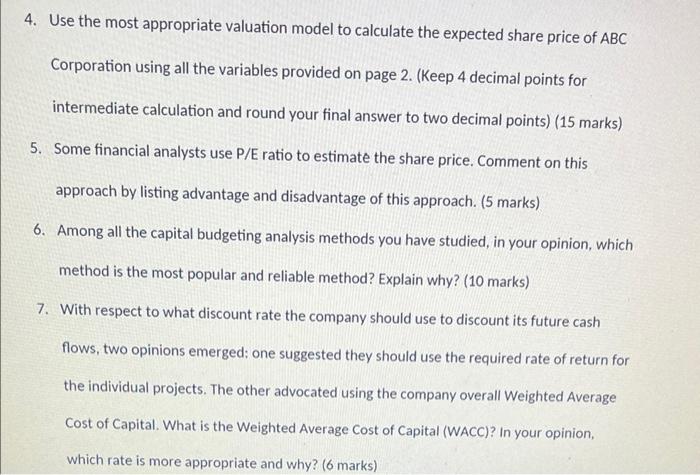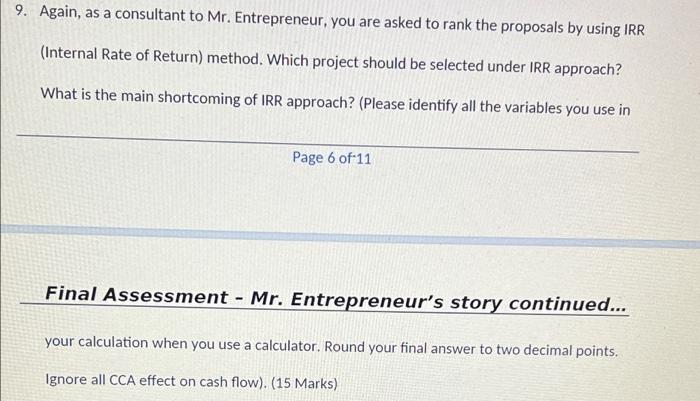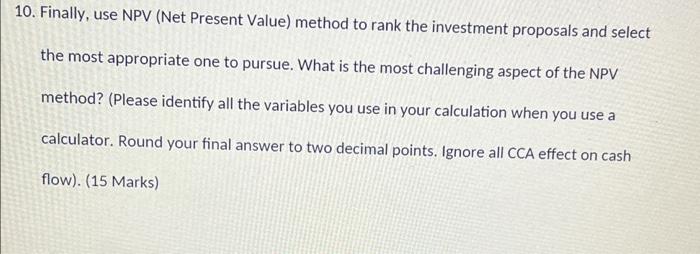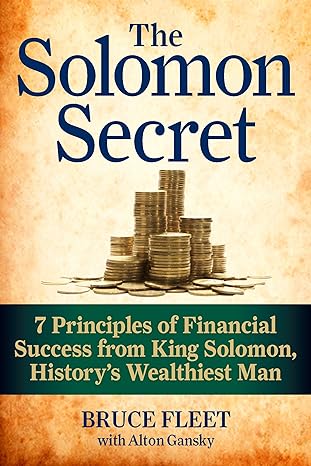1. In your opinion, should Mr. Entrepreneur only tap into domestic market in Canada by listing company shares on TSX? Or should he try to tap both domestic and US markets by listing his company shares both on TSX and NYSE (a dual listing)? Explain your answer. (5 marks) 2. What is the difference between Primary and Secondary market? Using Mr. Entrepreneur's IPO as an example, describe the main function of Primary and secondary market? (6 marks) mabc Zoom View as Text Do 3. In Canada, setting and enforcing market regulations are provincial responsibilities. However, in most other western countries, such as USA, Japan, regulating capital market is under Page 5 of 11 Final Assessment - Mr. Entrepreneur's story continued... - federal jurisdiction. Do you think Canada should change and make regulating capital market a federal mandate? Why? (6 marks) 4. Use the most appropriate valuation model to calculate the expected share price of ABC Corporation using all the variables provided on page 2. (Keep 4 decimal points for intermediate calculation and round your final answer to two decimal points) (15 marks) 4. Use the most appropriate valuation model to calculate the expected share price of ABC Corporation using all the variables provided on page 2. (Keep 4 decimal points for intermediate calculation and round your final answer to two decimal points) (15 marks) 5. Some financial analysts use P/E ratio to estimate the share price. Comment on this approach by listing advantage and disadvantage of this approach. (5 marks) 6. Among all the capital budgeting analysis methods you have studied in your opinion, which method is the most popular and reliable method? Explain why? (10 marks) 7. With respect to what discount rate the company should use to discount its future cash flows, two opinions emerged: one suggested they should use the required rate of return for the individual projects. The other advocated using the company overall Weighted Average Cost of Capital. What is the Weighted Average Cost of Capital (WACC)? In your opinion, which rate is more appropriate and why? (6 marks) 8. As a consultant to Mr. Entrepreneur, you are asked to rank the investment proposals proposed by Mr. Financer using Payback Period method. Which proposal should be selected? What is the chief disadvantage of this method? Why would anyone want to use this method? (Please show your calculation, round your answer to two decimal points) (12 marks) 9. Again, as a consultant to Mr. Entrepreneur, you are asked to rank the proposals by using IRR (Internal Rate of Return) method. Which project should be selected under IRR approach? What is the main shortcoming of IRR approach? (Please identify all the variables you use in Page 6 of 11 Final Assessment - Mr. Entrepreneur's story continued... your calculation when you use a calculator. Round your final answer to two decimal points. Ignore all CCA effect on cash flow). (15 Marks) 10. Finally, use NPV (Net Present Value) method to rank the investment proposals and select the most appropriate one to pursue. What is the most challenging aspect of the NPV method? (Please identify all the variables you use in your calculation when you use a calculator. Round your final answer to two decimal points. Ignore all CCA effect on cash flow). (15 Marks)

